2017 was a pretty amazing year for donations to the Museum’s collection. Besides receiving two multi-million-dollar boats from Oracle Team USA and a painting by artist James Gurney we received many new and historically interesting items. One gift we received in December is so truly extraordinary I thought I would take you on a tour of it!
The object is a despatch box made by the famous Asprey of London in 1871-1872 (based upon the silver marks and advice cards). Despite the relatively plain exterior, the first clue the piece is pretty astounding is the ornately engraved escutcheon plate surrounding the retracted handle on the lid. At the center of the plate is a group of two crests or logos and a monogram (the letters are E D S M but we aren’t exactly sure of the order in which they should be read). On the right side of the plate is a small button flush with the surface of the lid, pushing it causes the handle to release from the plate so the box can be carried—although I wouldn’t, the box weighs about 30 pounds!
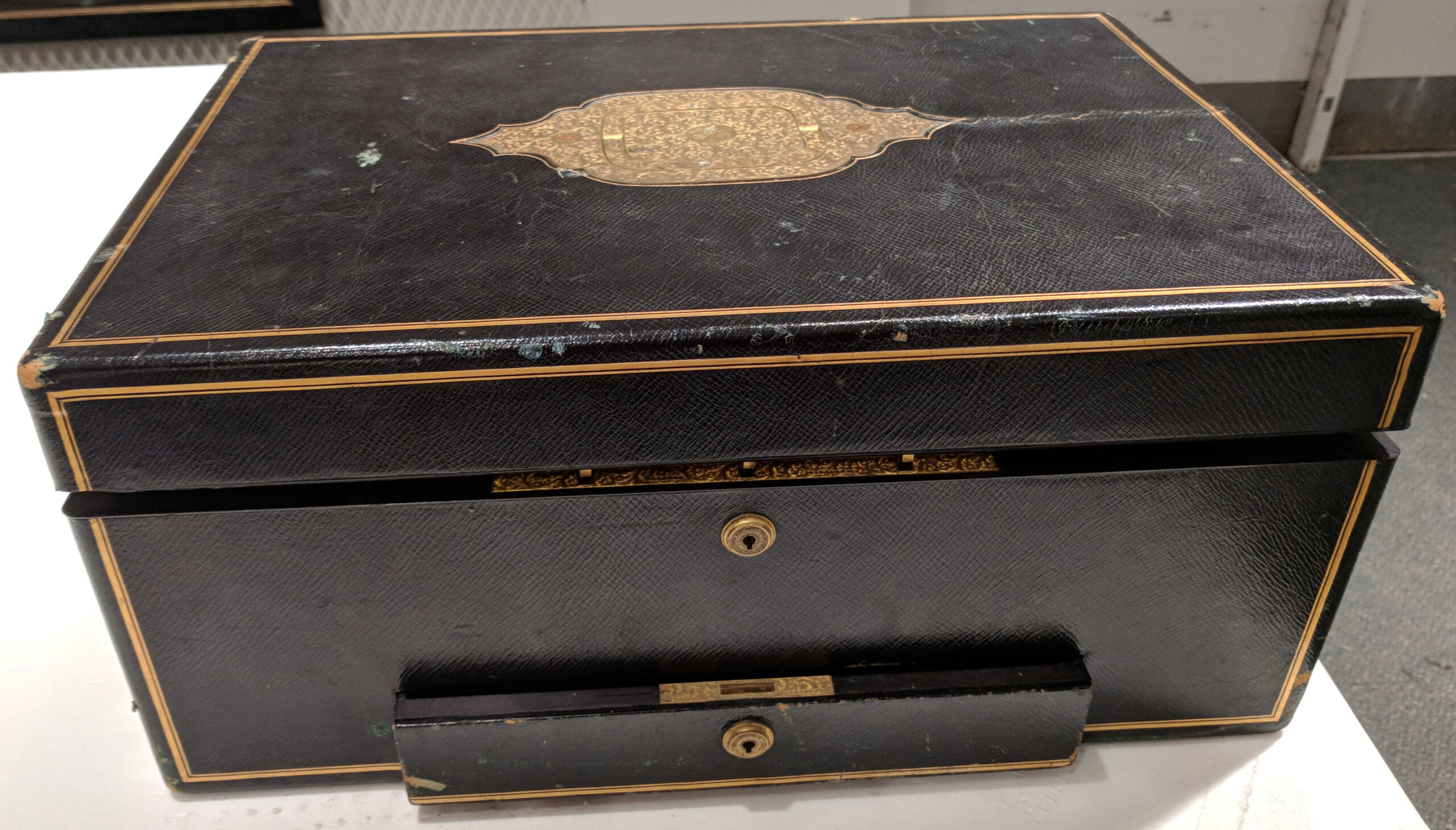
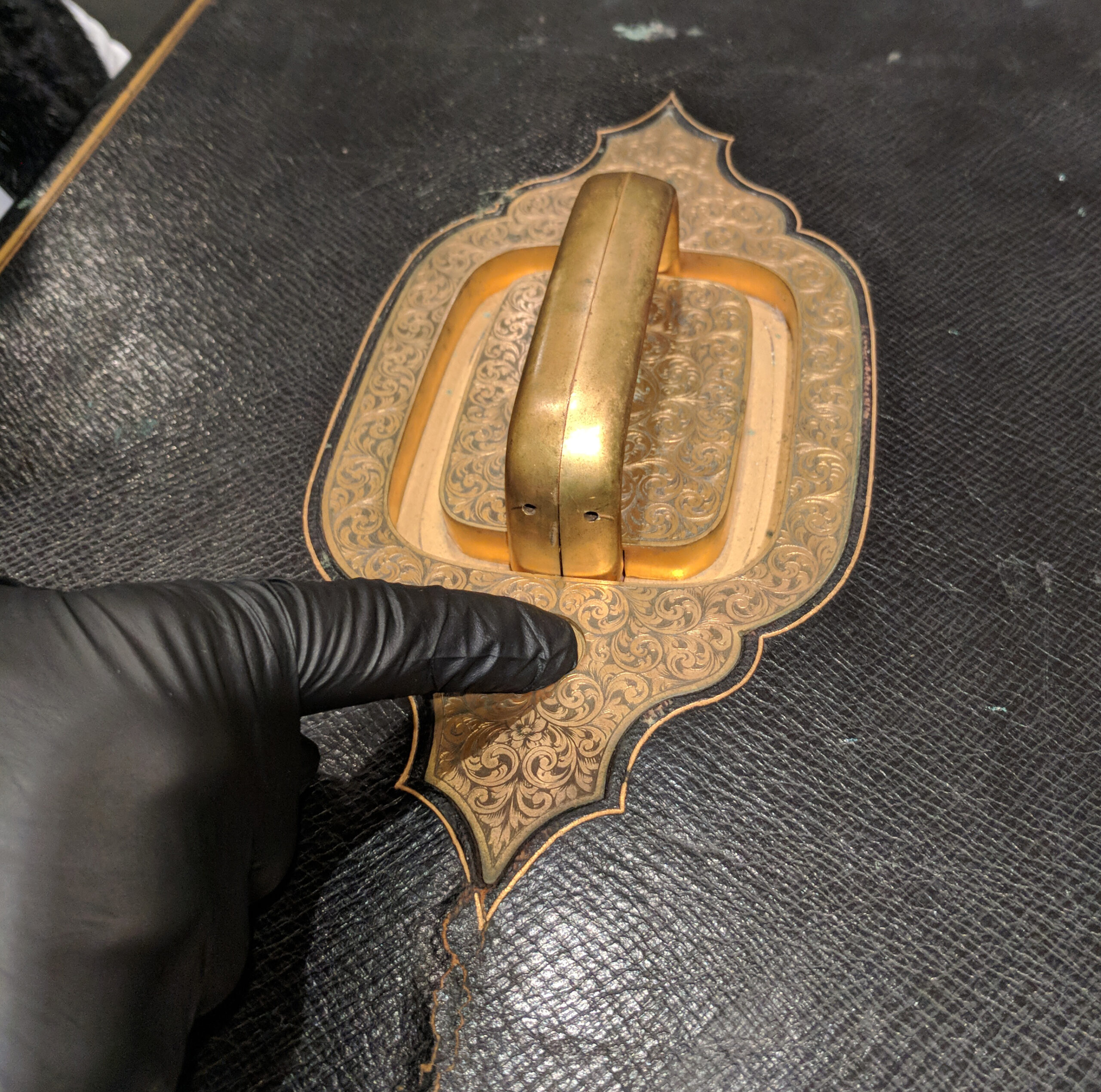
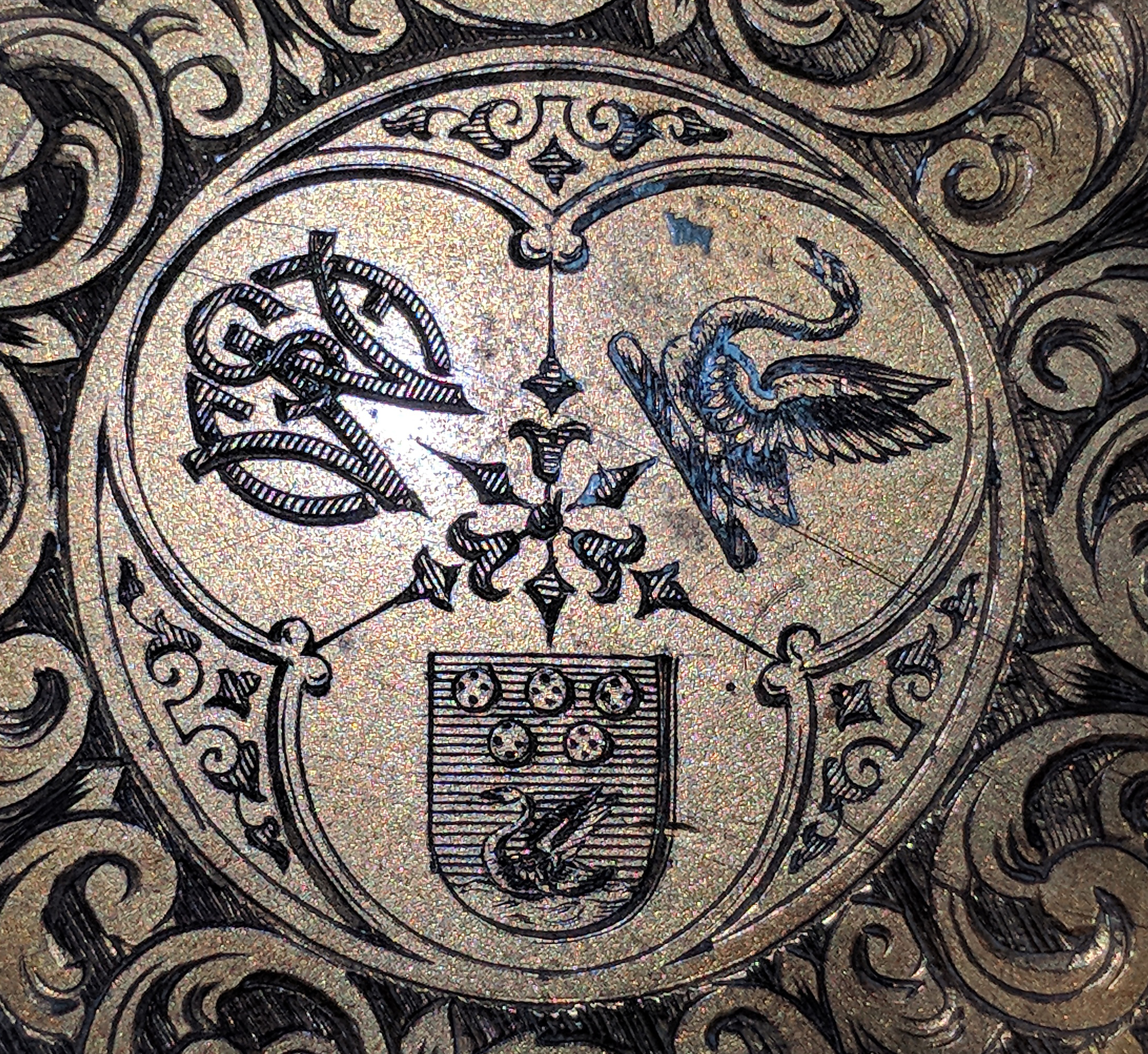

Raising the lid involves the use of Asprey’s ingenious patent mechanism which is a modified Bramah lock. The normal Bramah lock automatically locked a box, which could pose a real problem if the owner lost the key or accidentally left it inside the box. Asprey’s solution was to add a spring-load mechanism that allowed the lock to slide across or down to unlock the box. On our box the lid is unlocked by sliding the Asprey patent lock to the right. To open the bottom compartment the lock slides down.
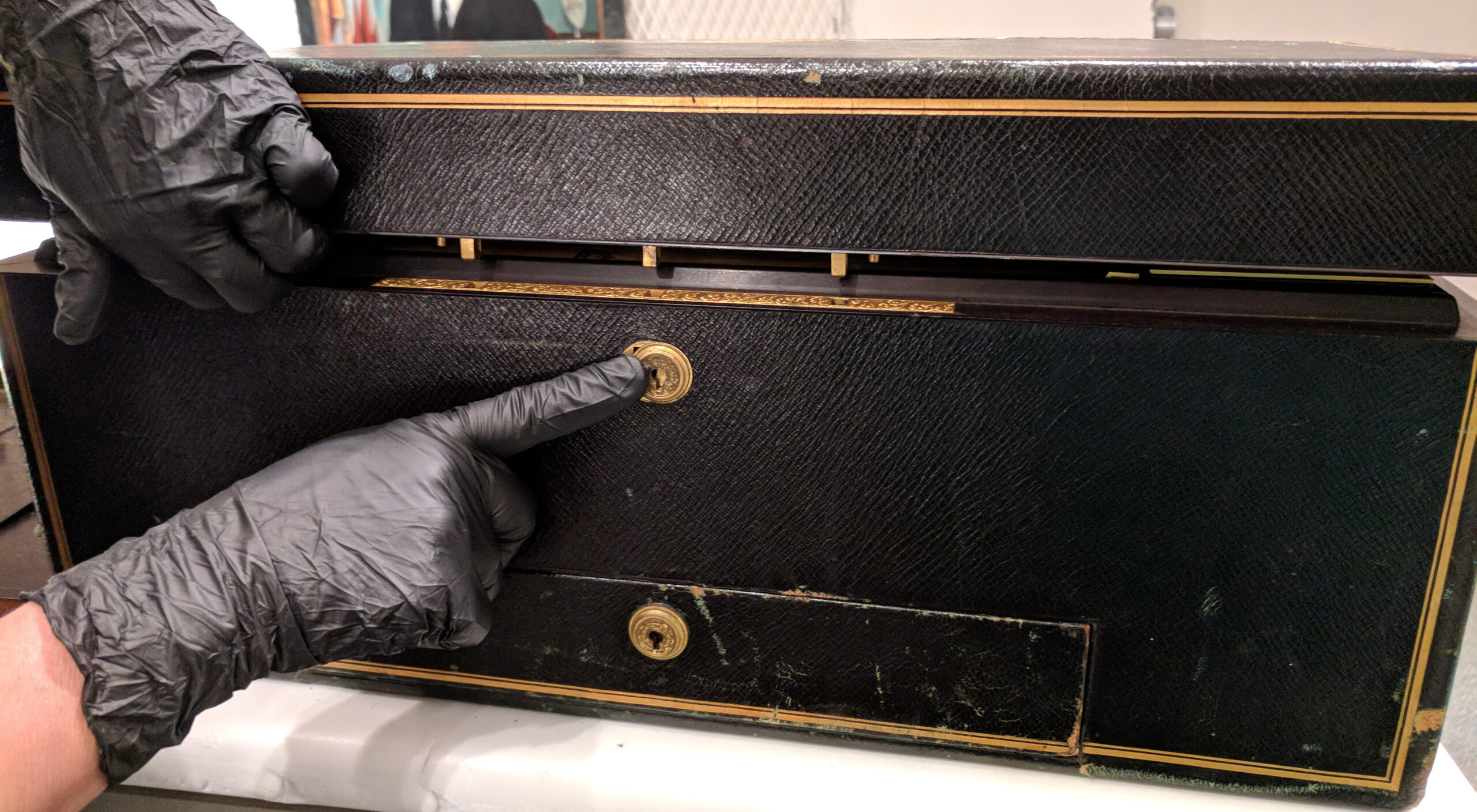
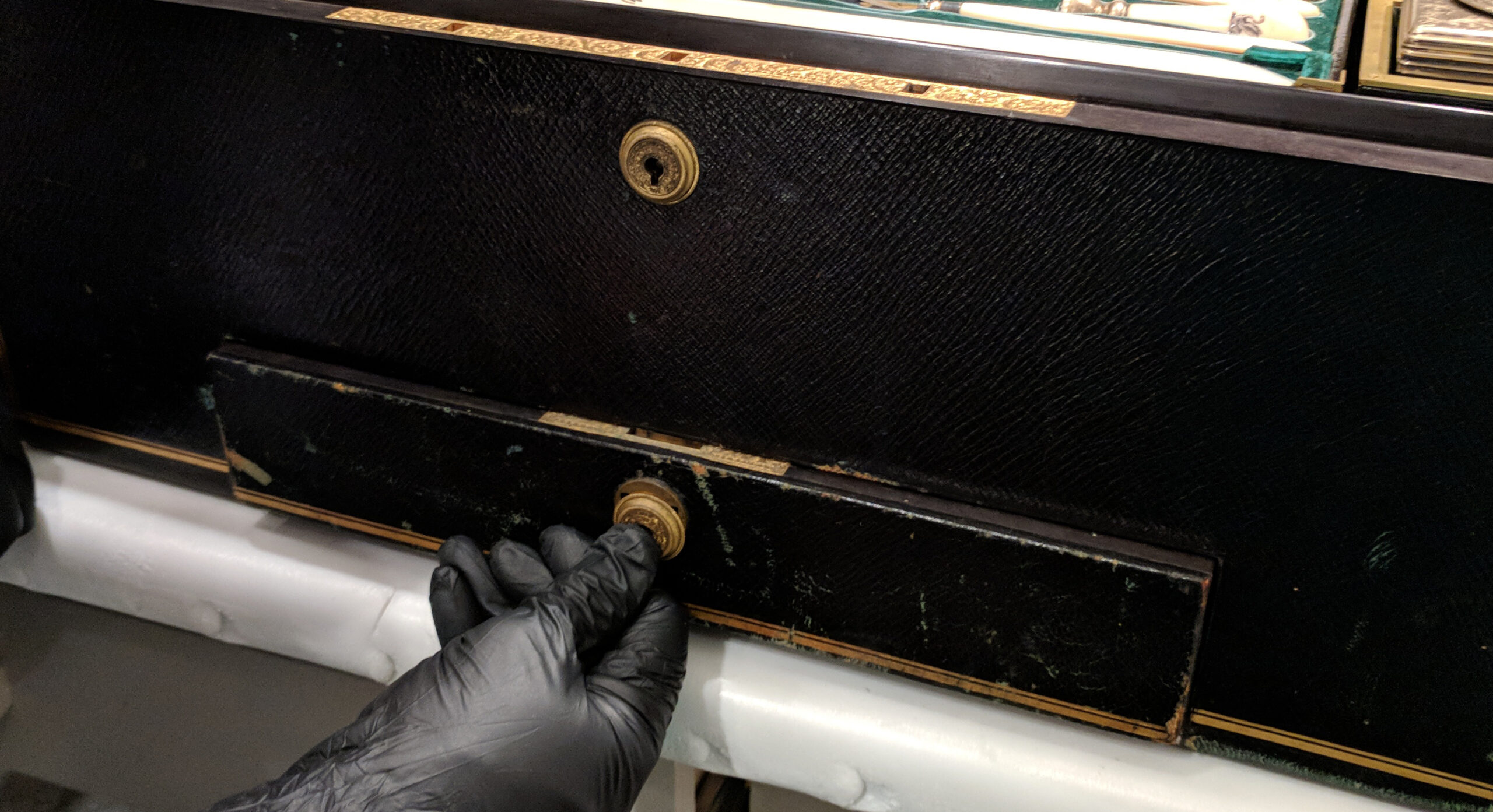
Upon raising the lid everybody’s immediate reaction is to gasp—although I have also heard “oh my god” and “wow”. I myself uttered “holy s–t” (sorry for the profanity but looking at the pictures you’ll understand my reaction!). The interior of the lid contains a central tray with a mechanical calendar, thermometer, barometer and advice cards detailing mail ship departure days from Marseilles and a chart of how much it costs to send mail through Brindisi (Italy) or the Suez to the East Indies. Below are three drop down letter or card holders. I am pretty sure that the panels to the left and right also contained trays as there are release mechanisms at the top of each compartment, but sadly these trays are missing.
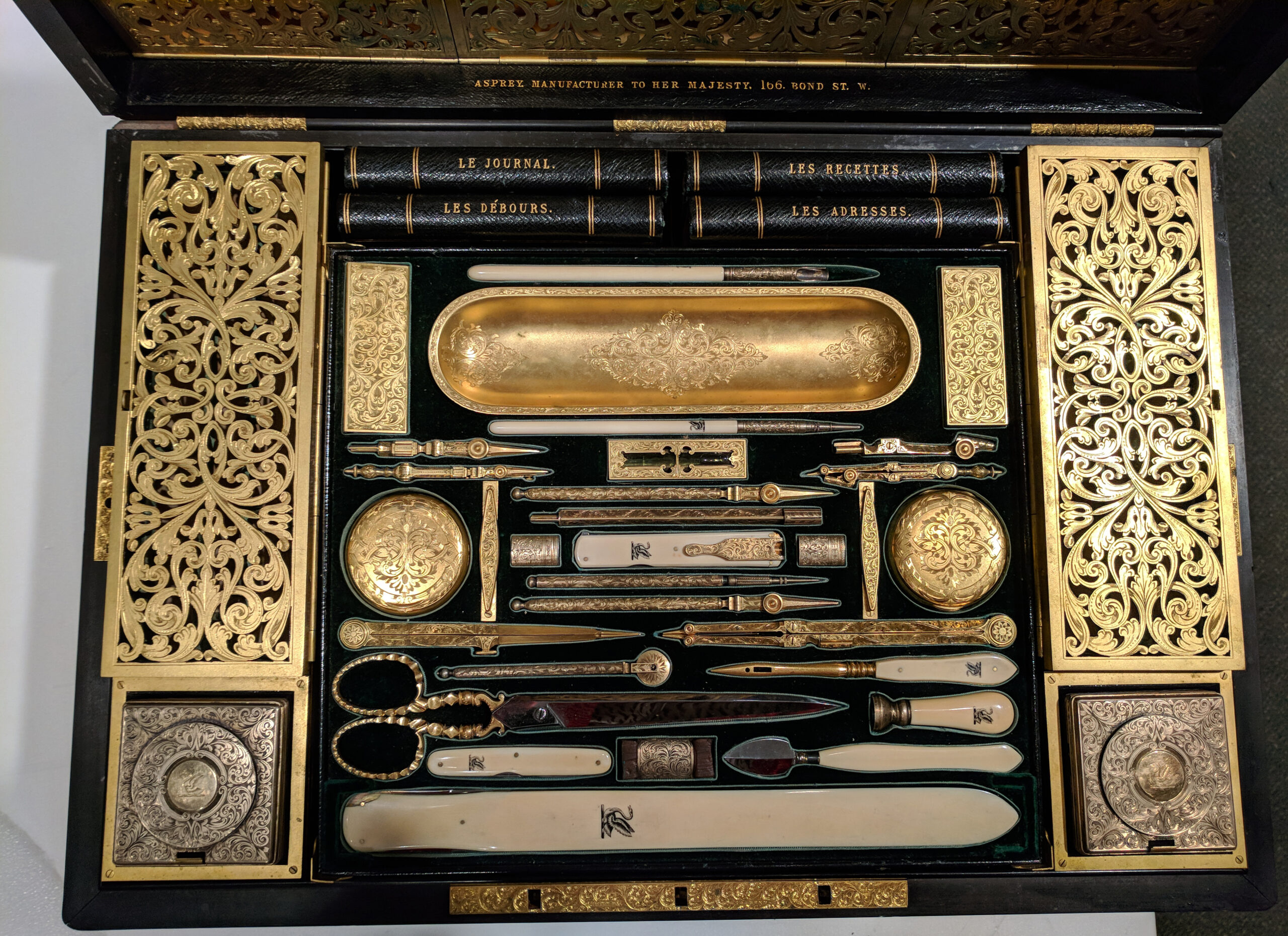
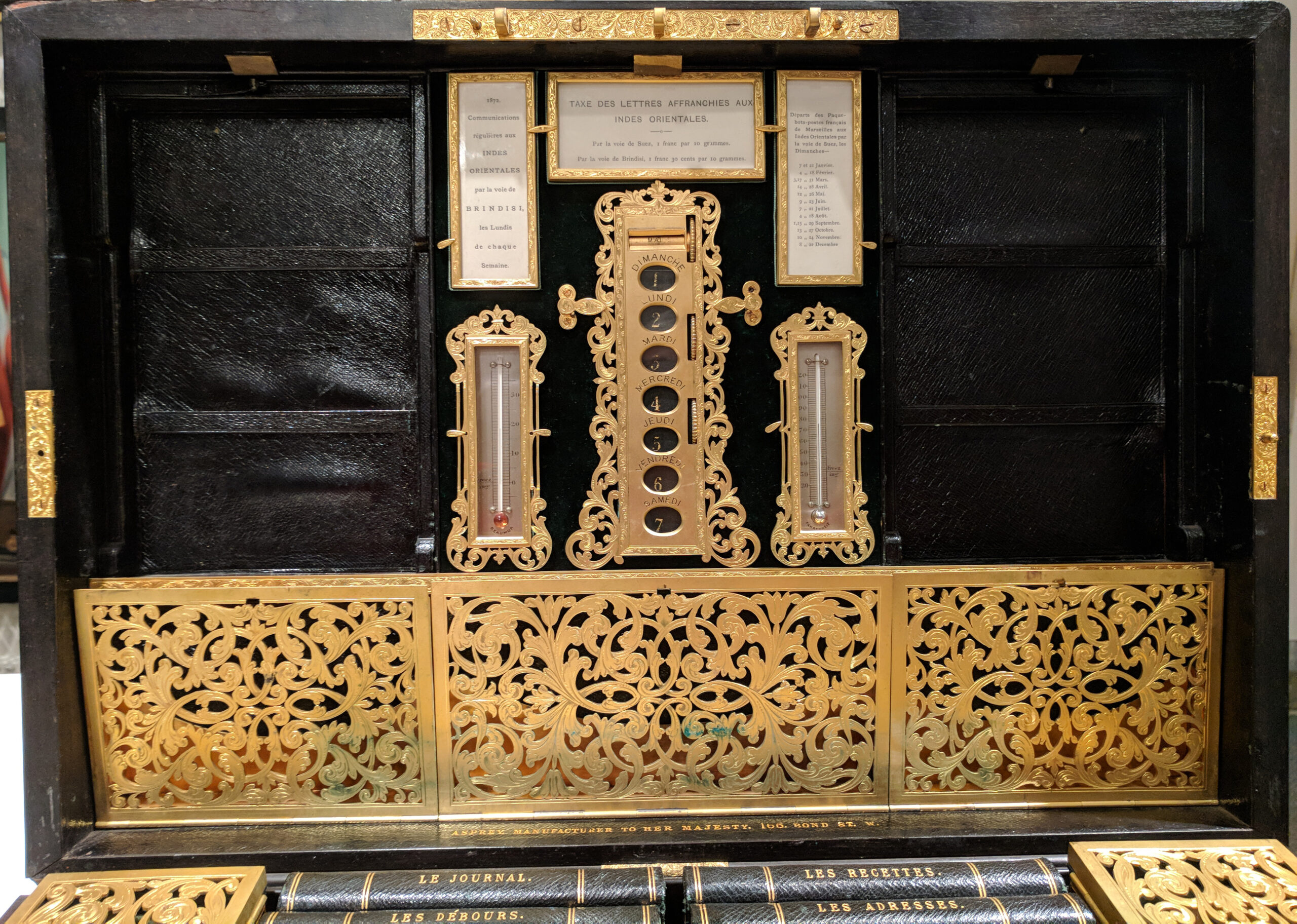
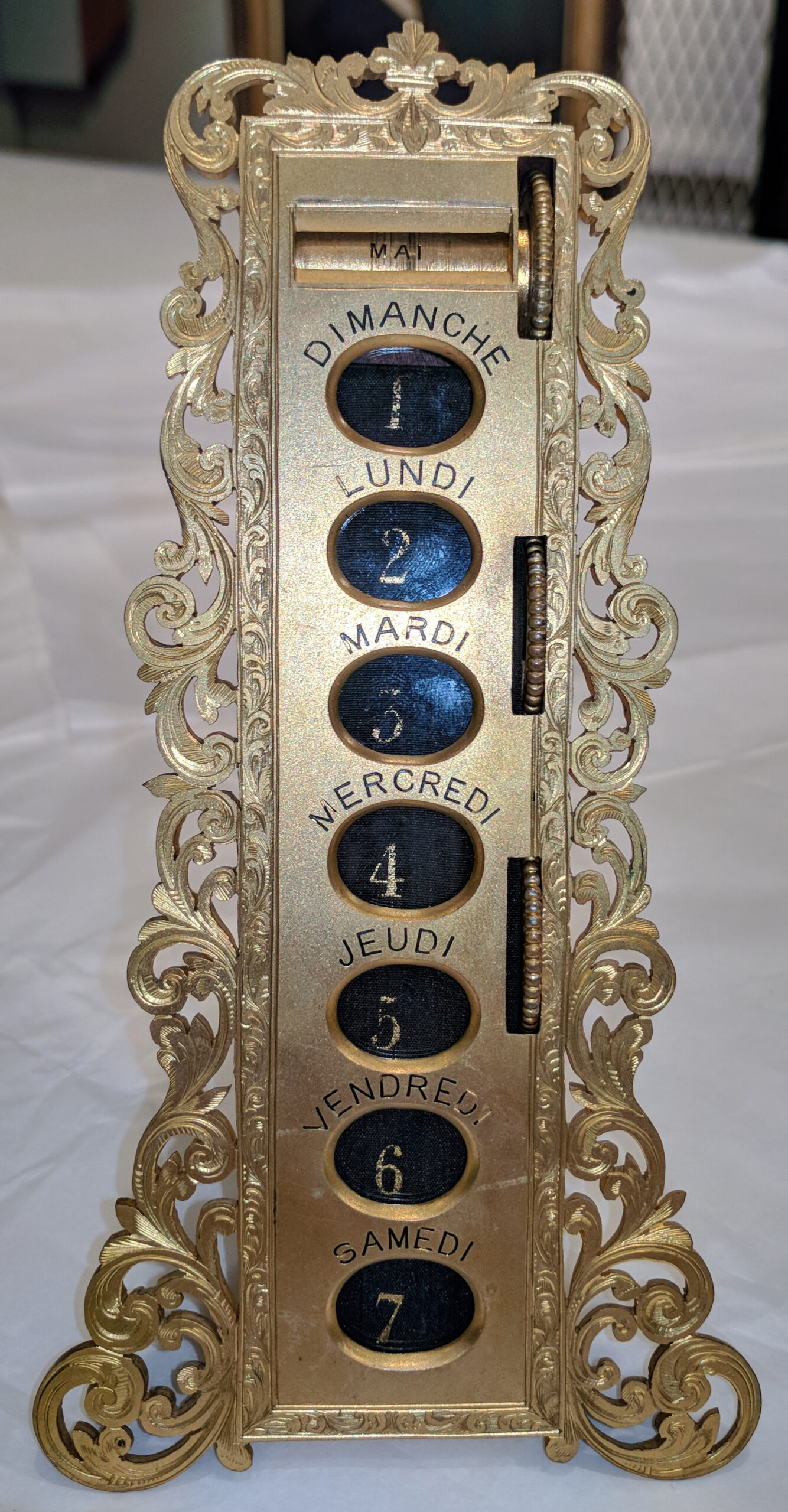
The interior of the box contains numerous compartments. At the center is a tray with gilt corner supports. The tray holds many different types of instruments: a gilt tray (which can be removed to reveal a parallel rule), drafting and drawing tools, dividers, wax seal, scissors, letter opener, quill cutter, level, a small storage box, a knib blotter, a pen knife, erasers for both ink and pencil, containers for pen leads and pen knibs, a compass and an aneroid barometer. All in all, the tray contains about 30 different implements. The tray can be removed to access a compartment for storing paper.

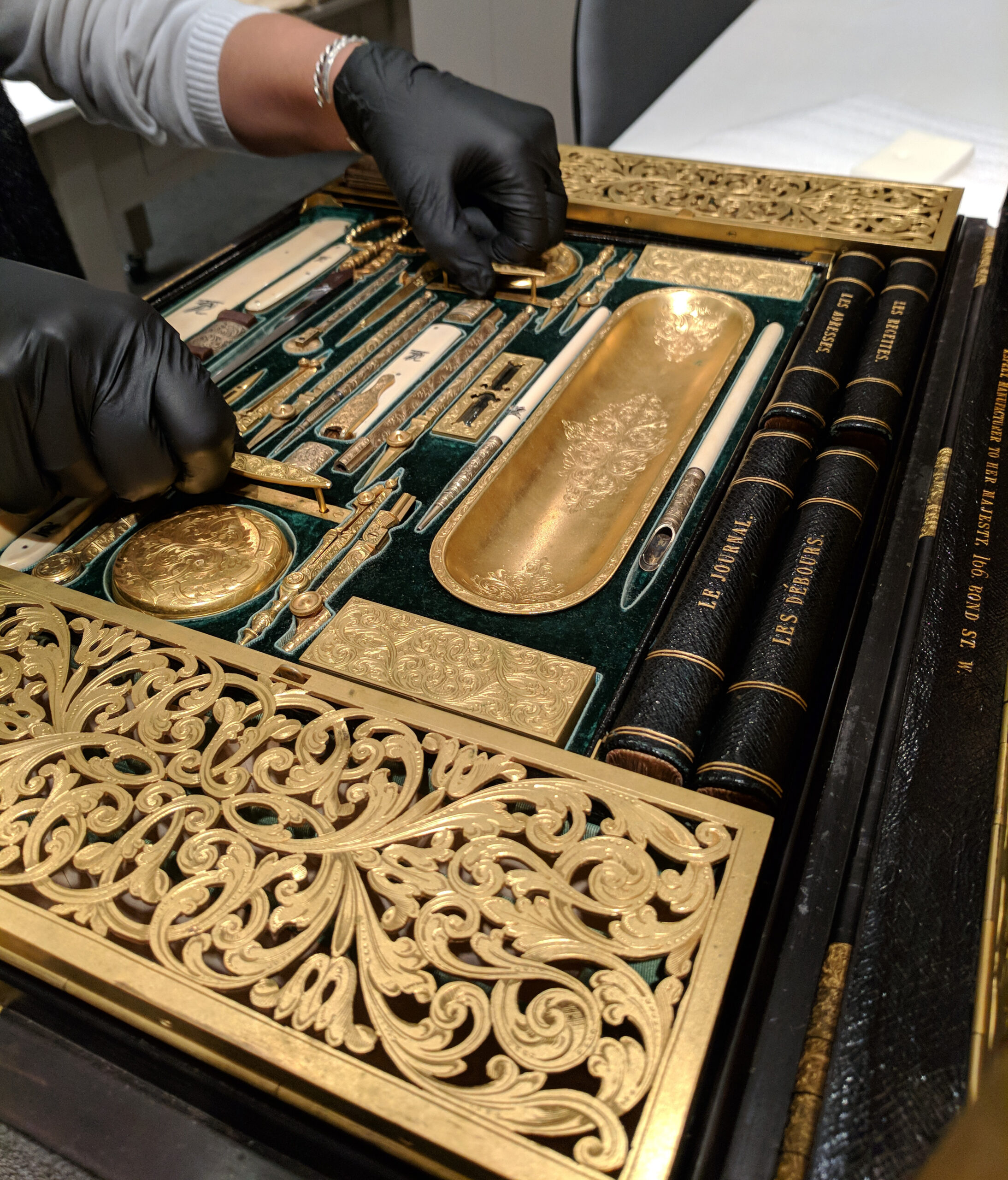
Surrounding the central tray are a pair of removable boxes with compartments for storing paper or note cards or other items and two small locking drawers. One box contains an inkwell while the other contains a matchsafe.
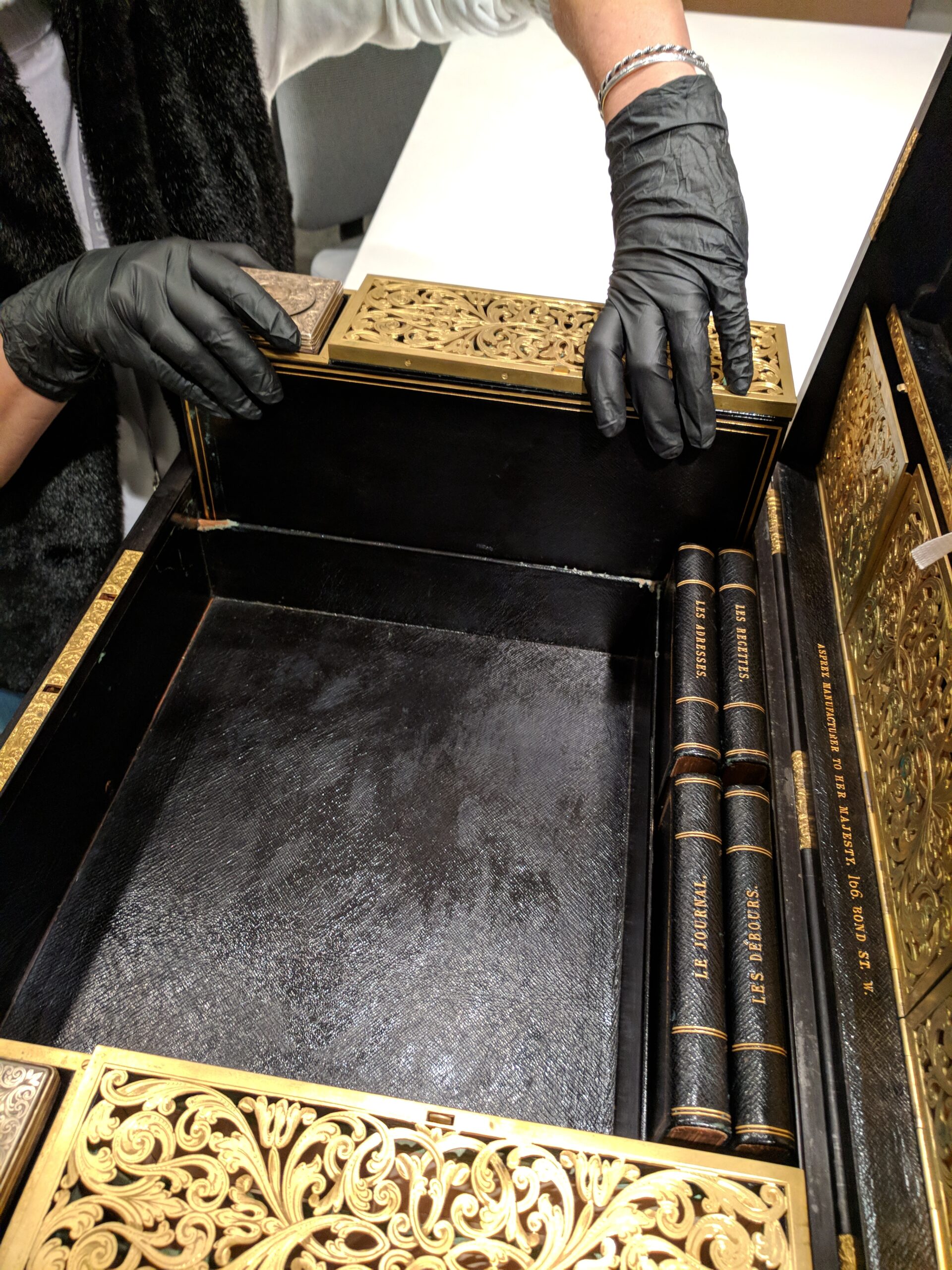
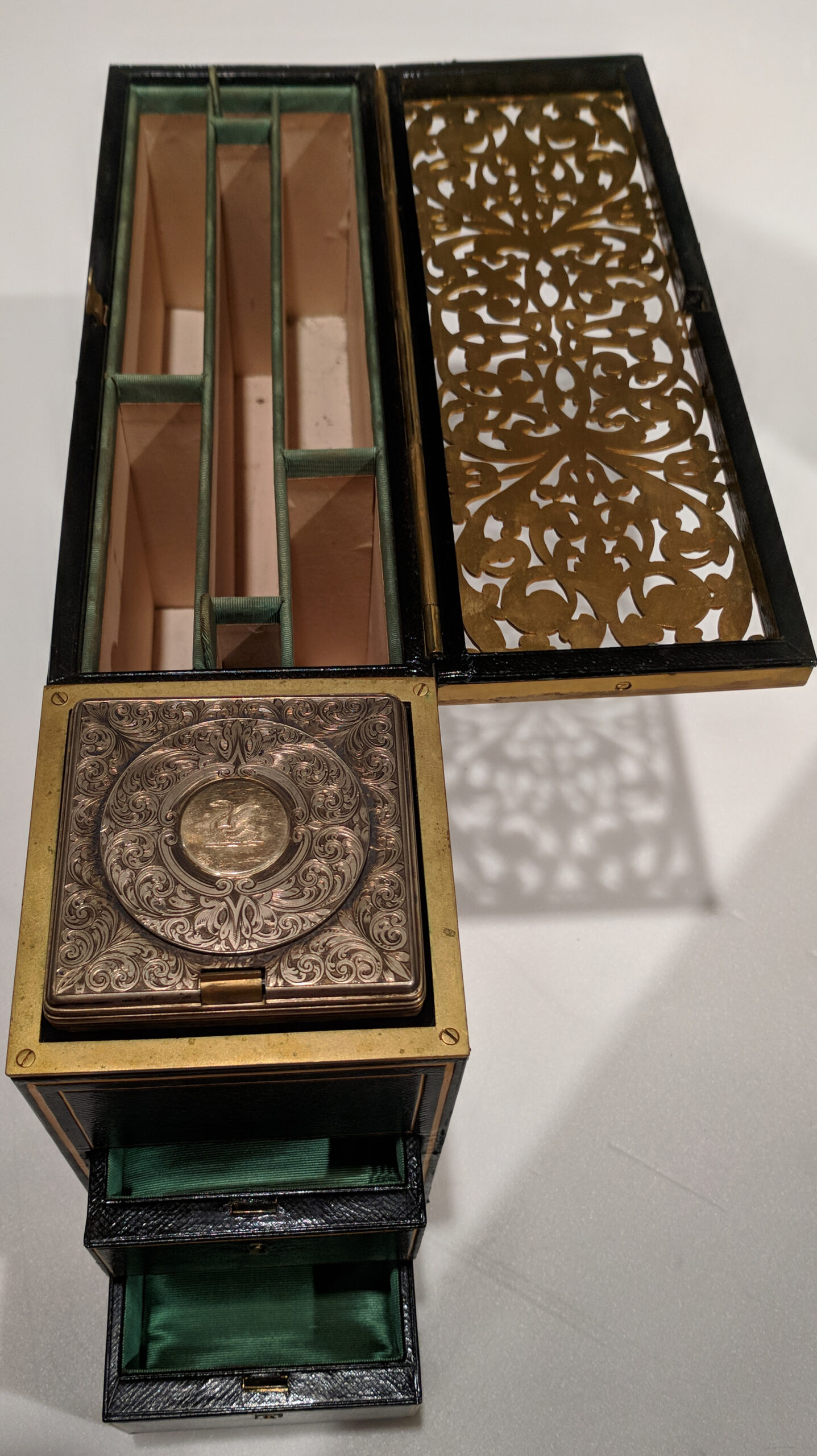
Beneath the box on the left side one finds a button that releases a false bottom and provides access to another compartment.
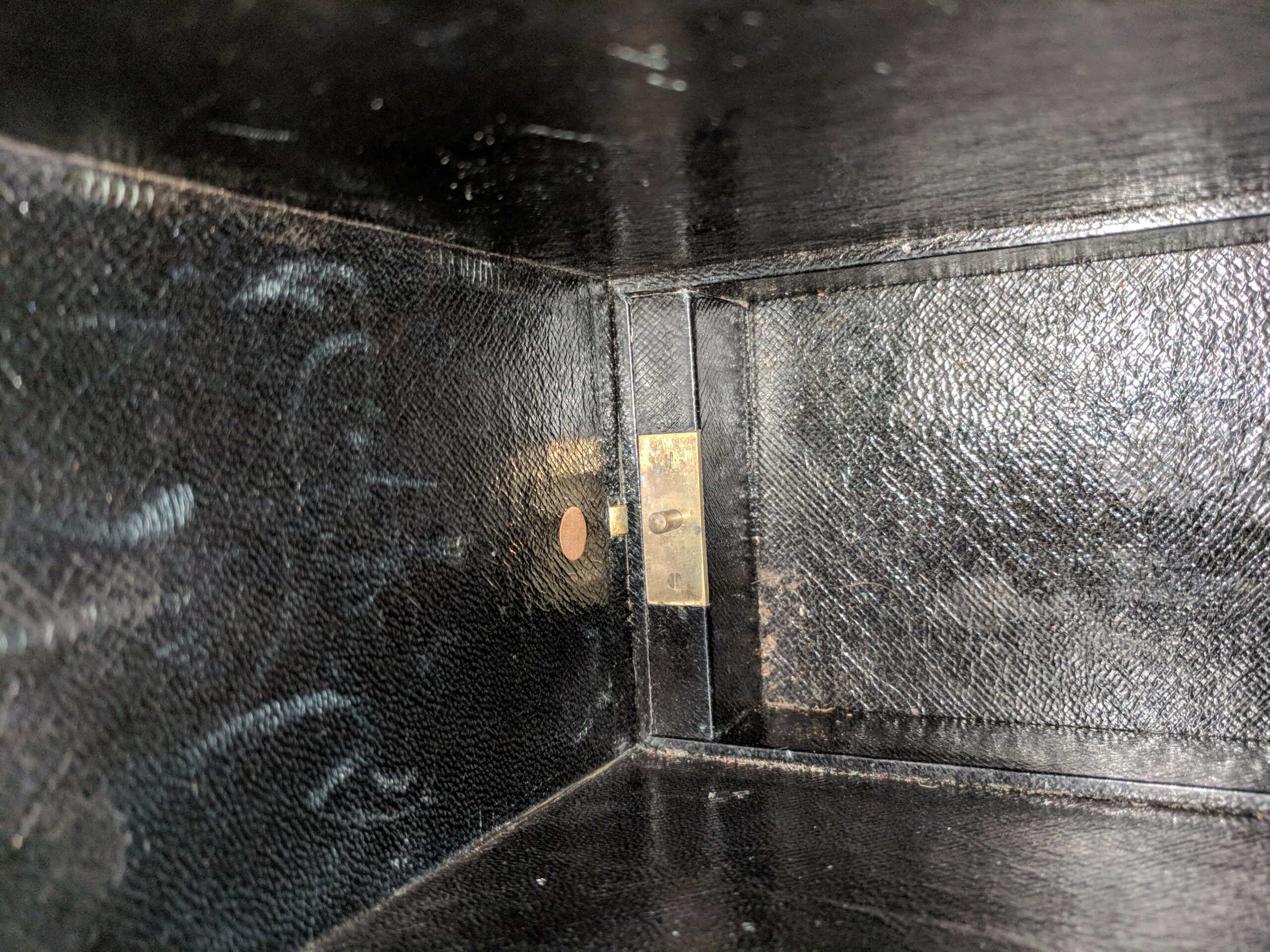
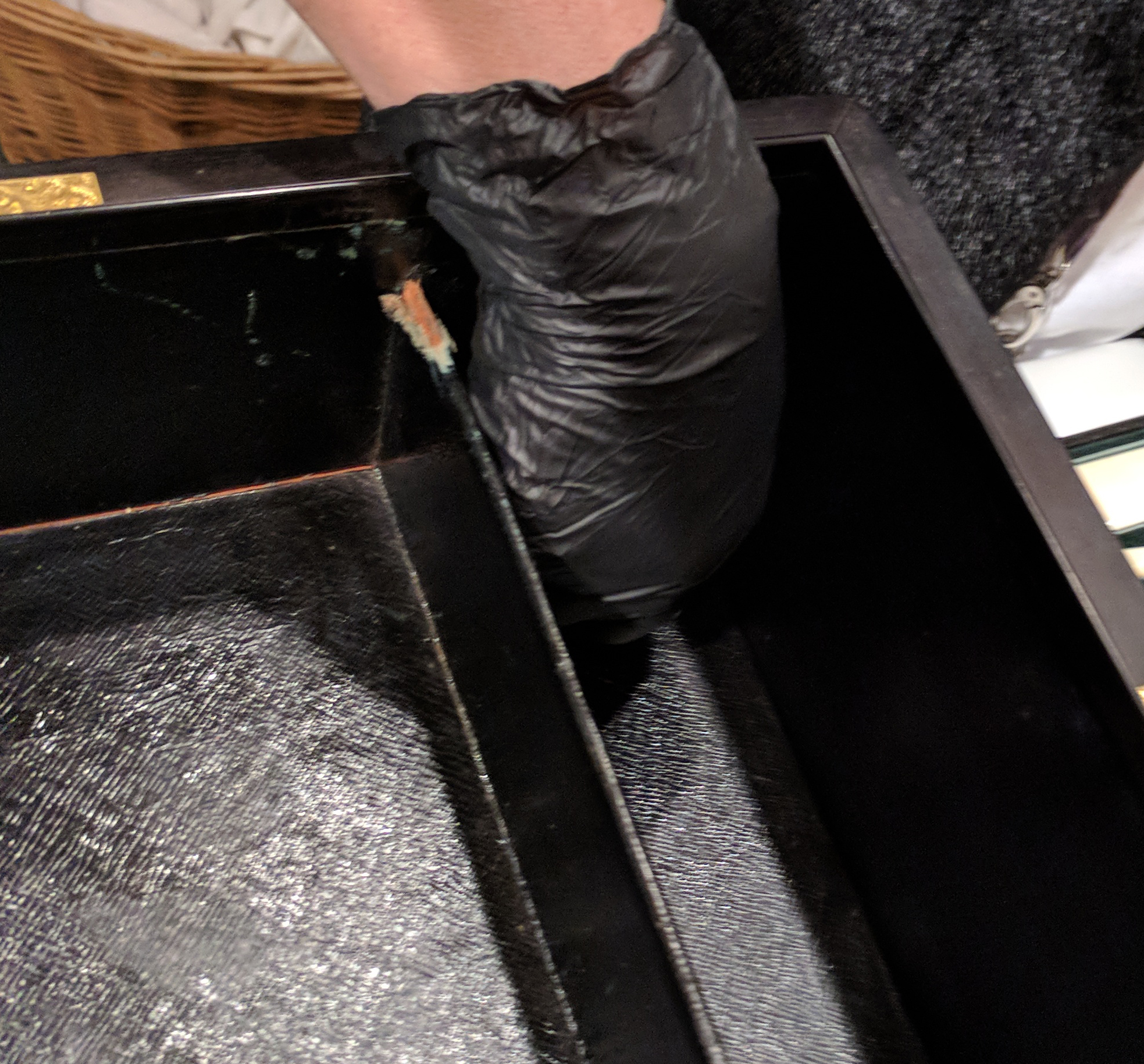
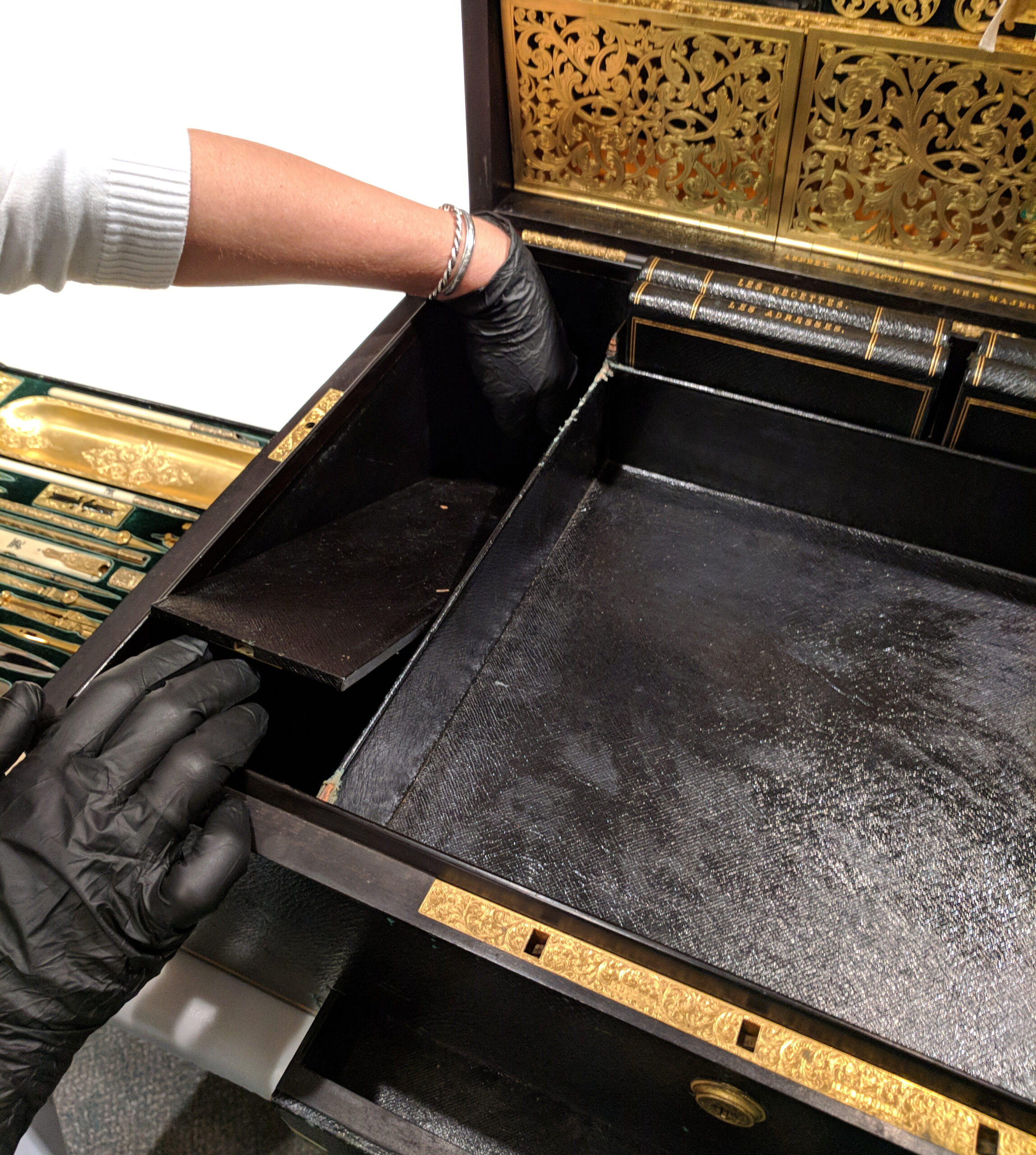
The four books at the back of the main compartment—which are a journal, receipt book, a disbursements book and an address book—can be lifted out to reveal not one, but two more hidden compartments. The “dot” at the left side reveals the location of the mechanism that releases the compartment. Once removed, is reveals itself as a money drawer. Inside are two spring-loaded containers for 25 coins (I assume francs since everything is in French!). As each coin is removed the spring presses the next one to top of the container.
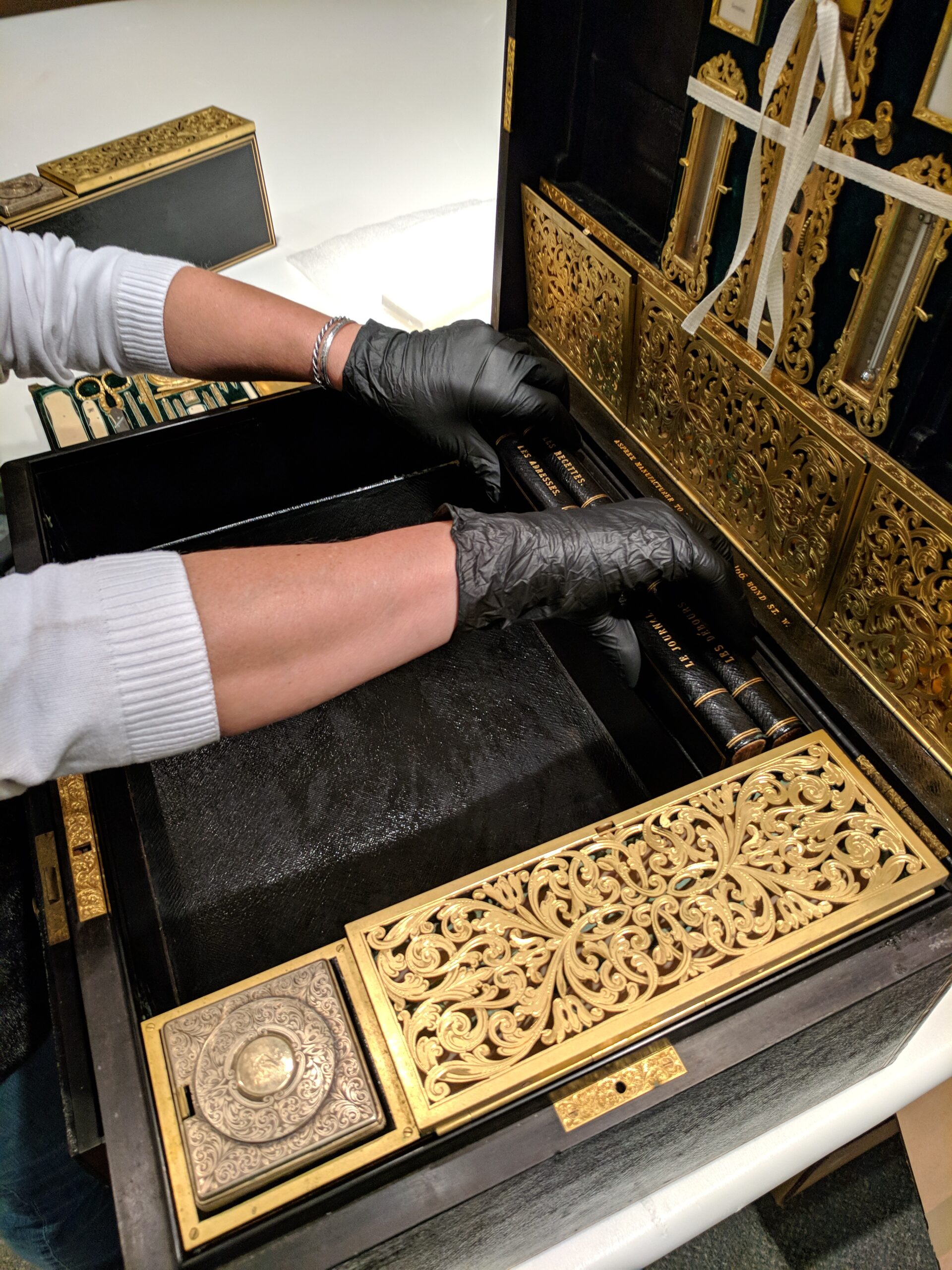
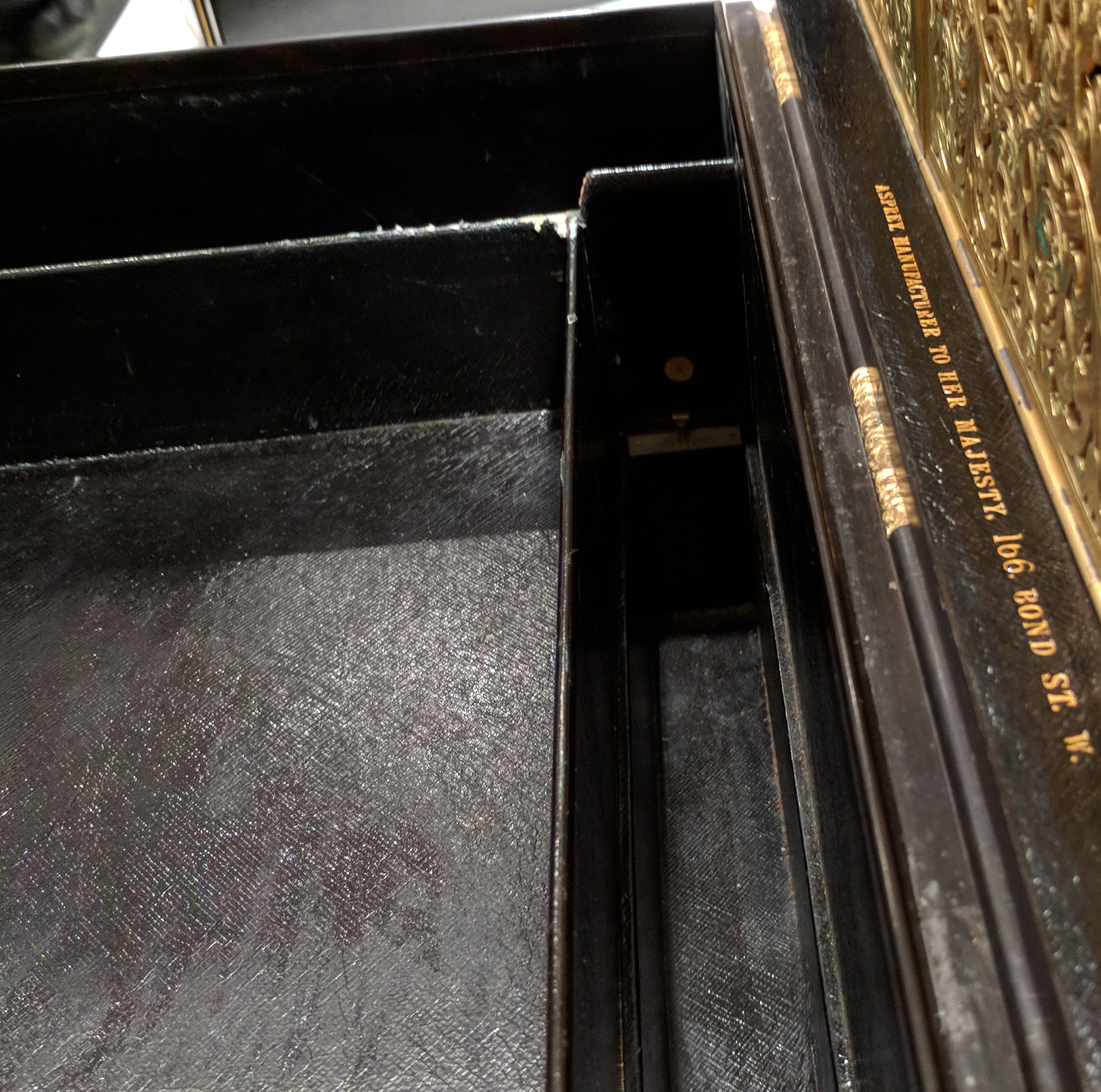
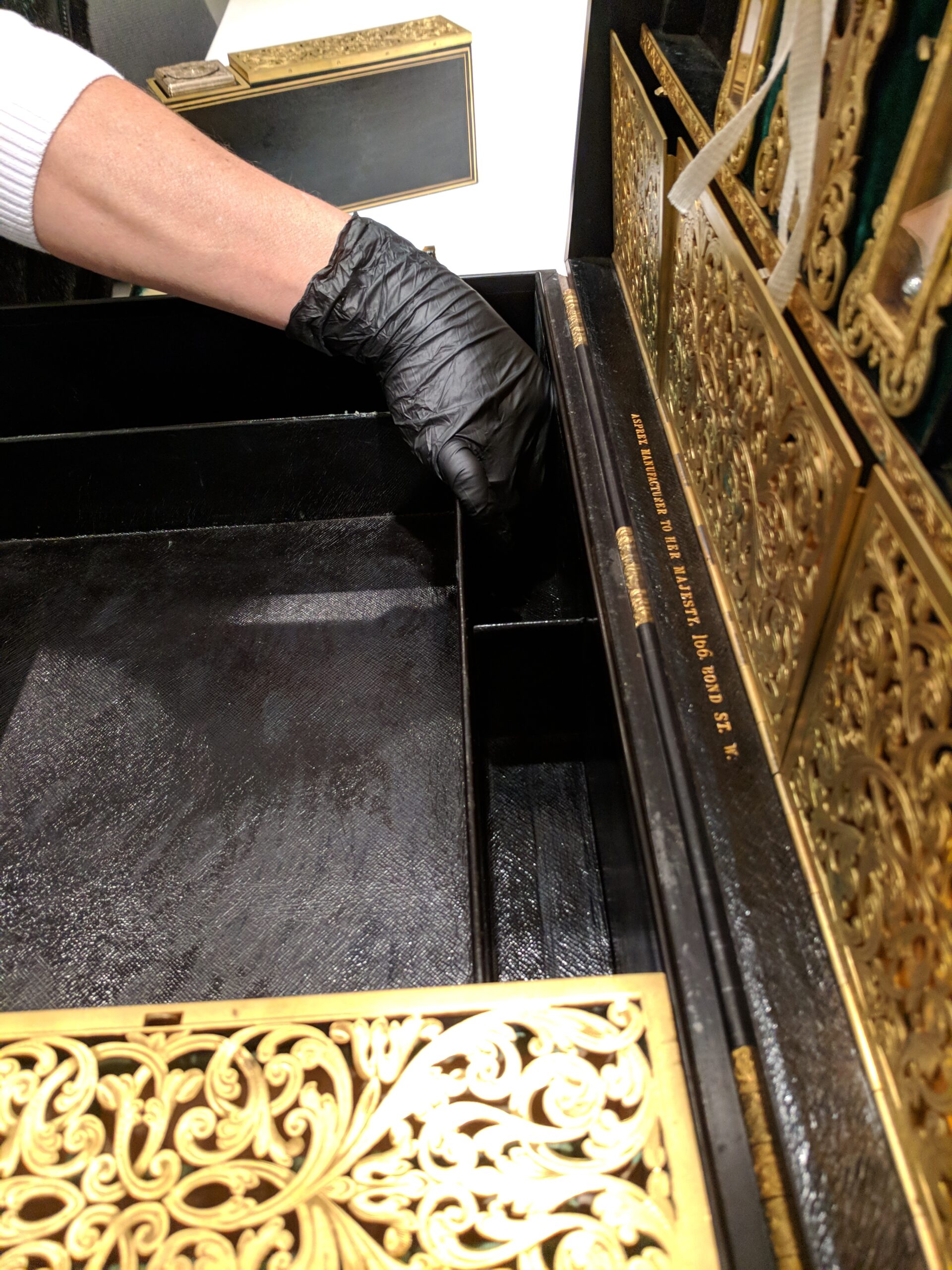
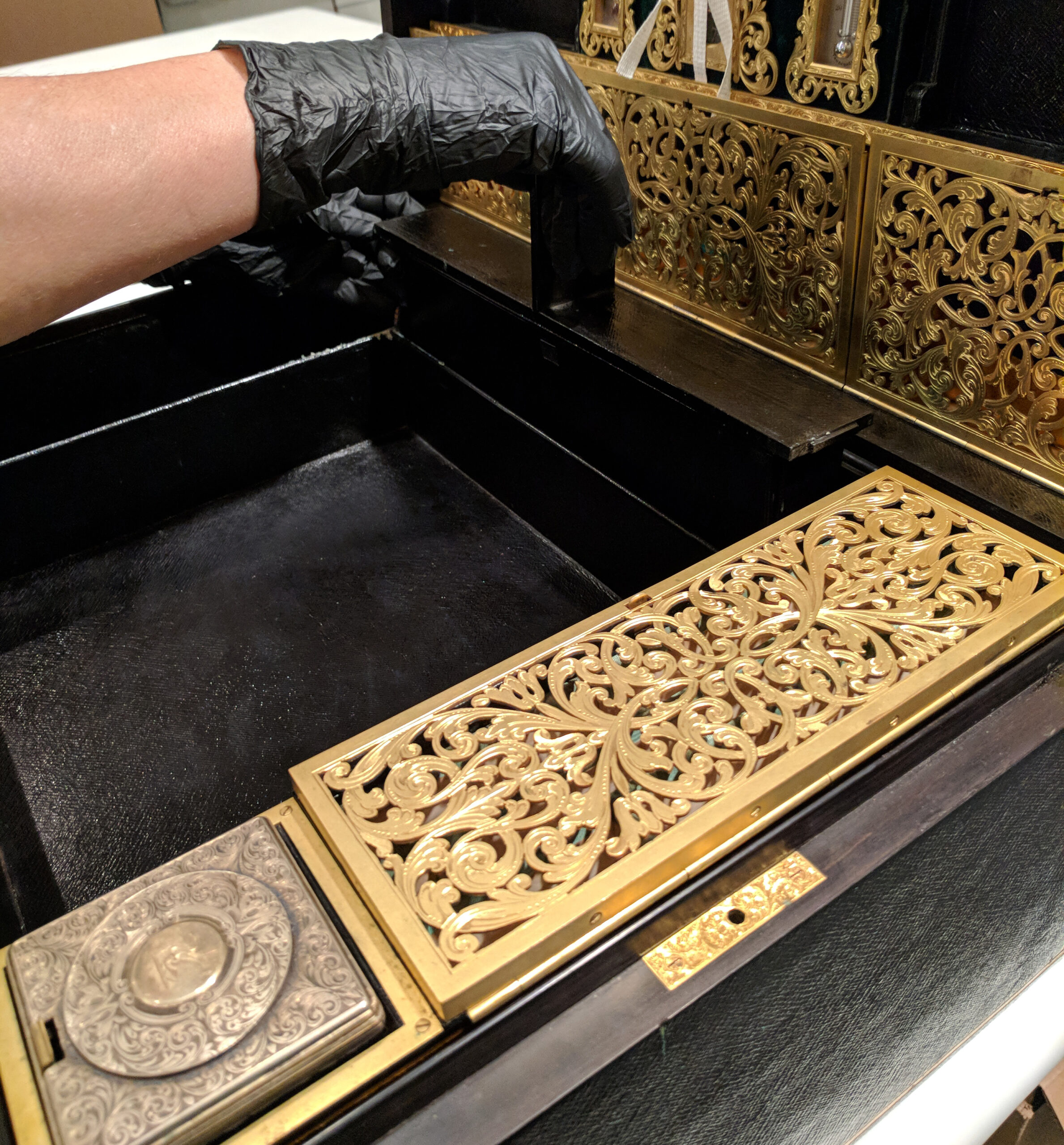
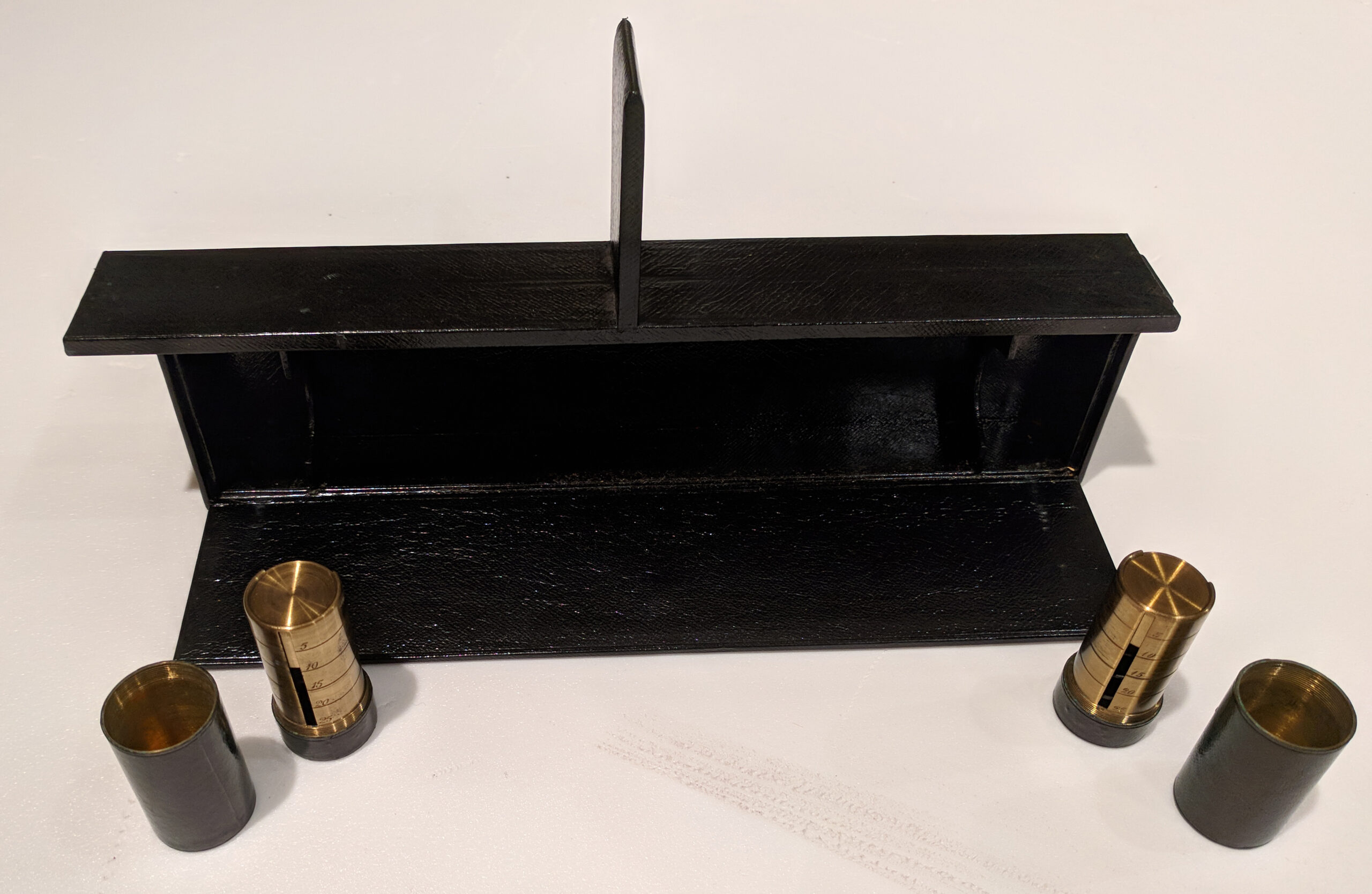
On the right side of that same compartment is a second sliding door which releases yet another small hidden drawer.

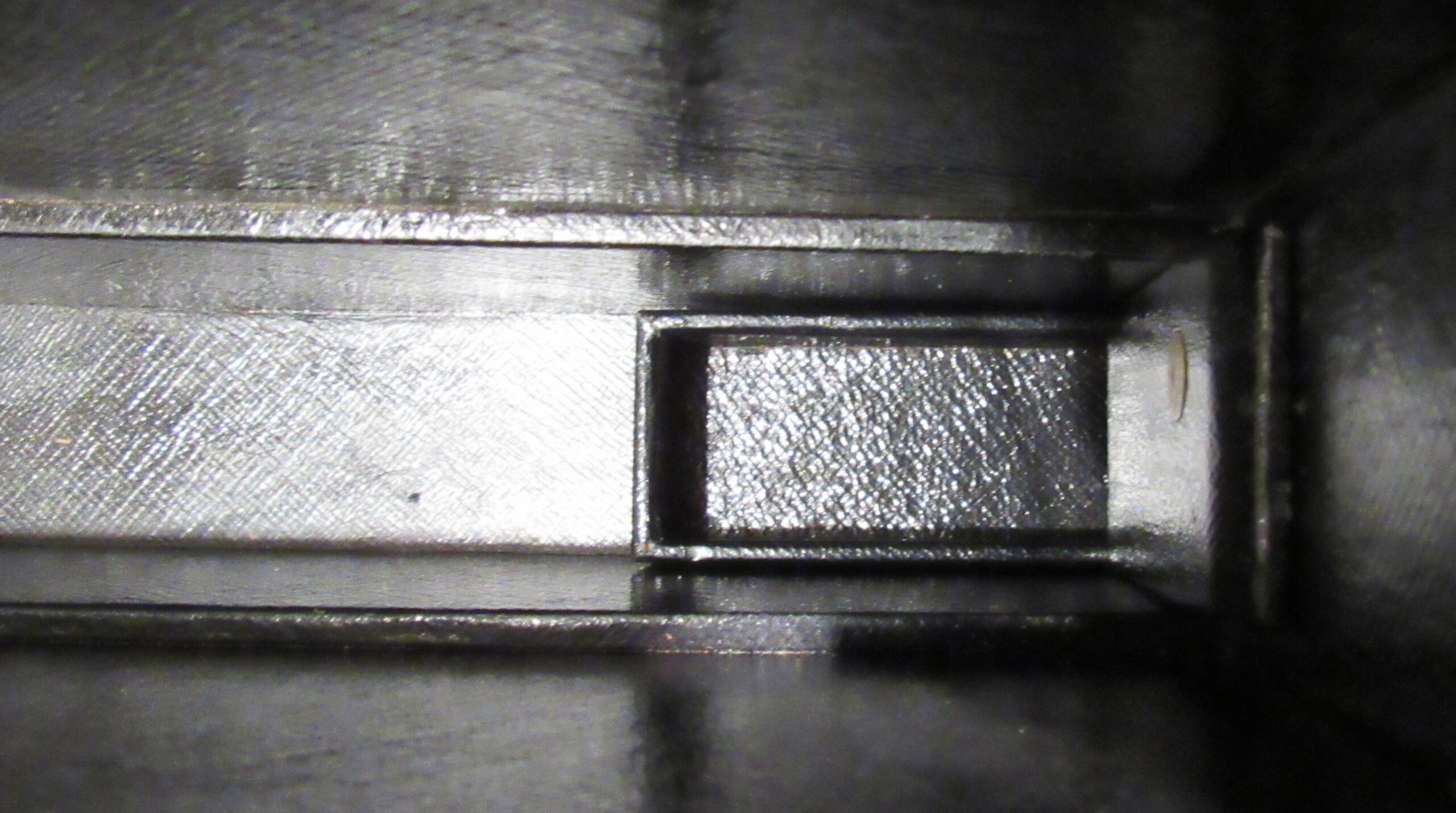
Removing the despatch boxes lower drawer reveals two more secret compartments. One is located above the drawer and below the main compartment. Pressing the “dot” at the center front inside the main compartment releases the tray.
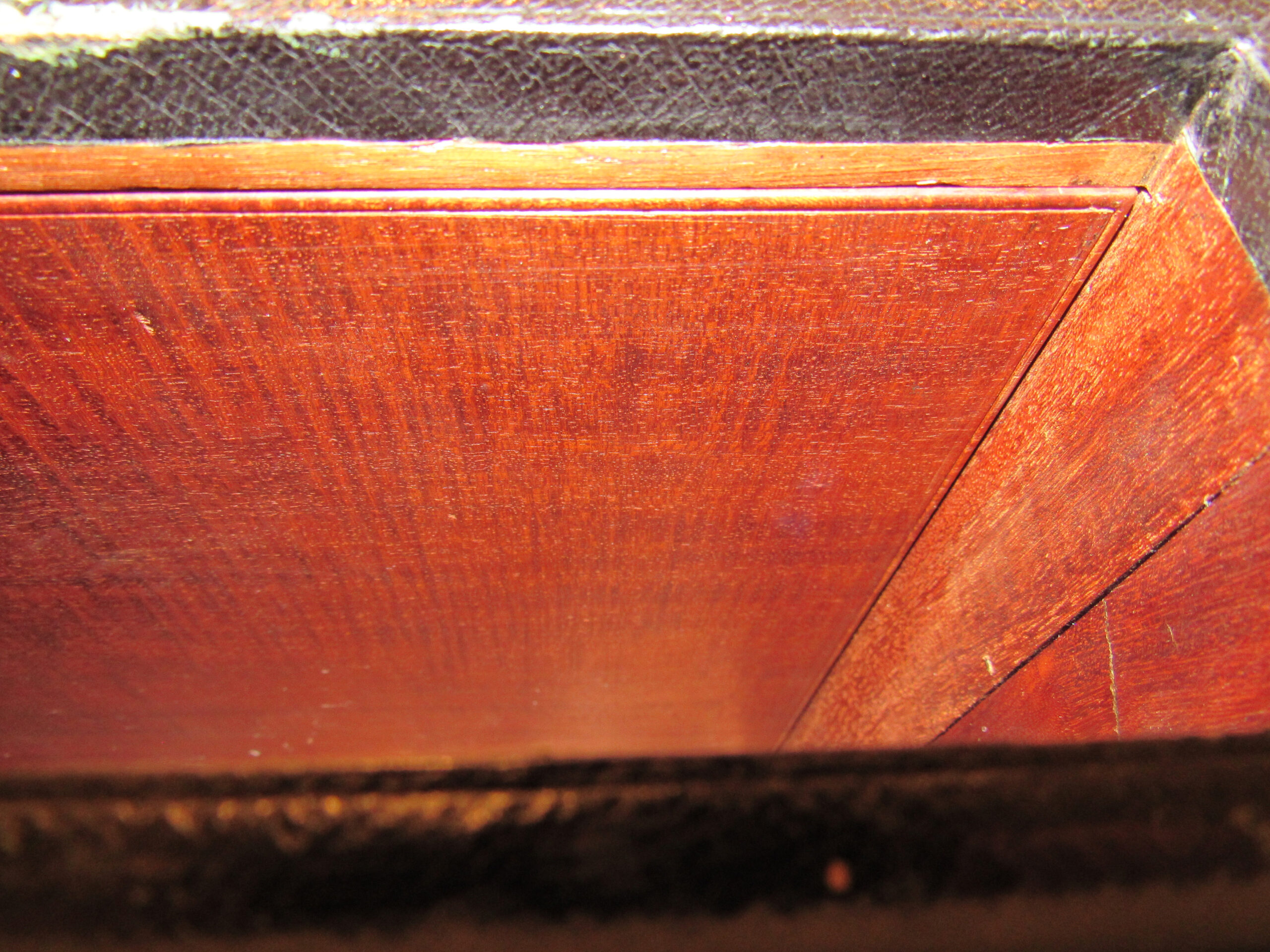
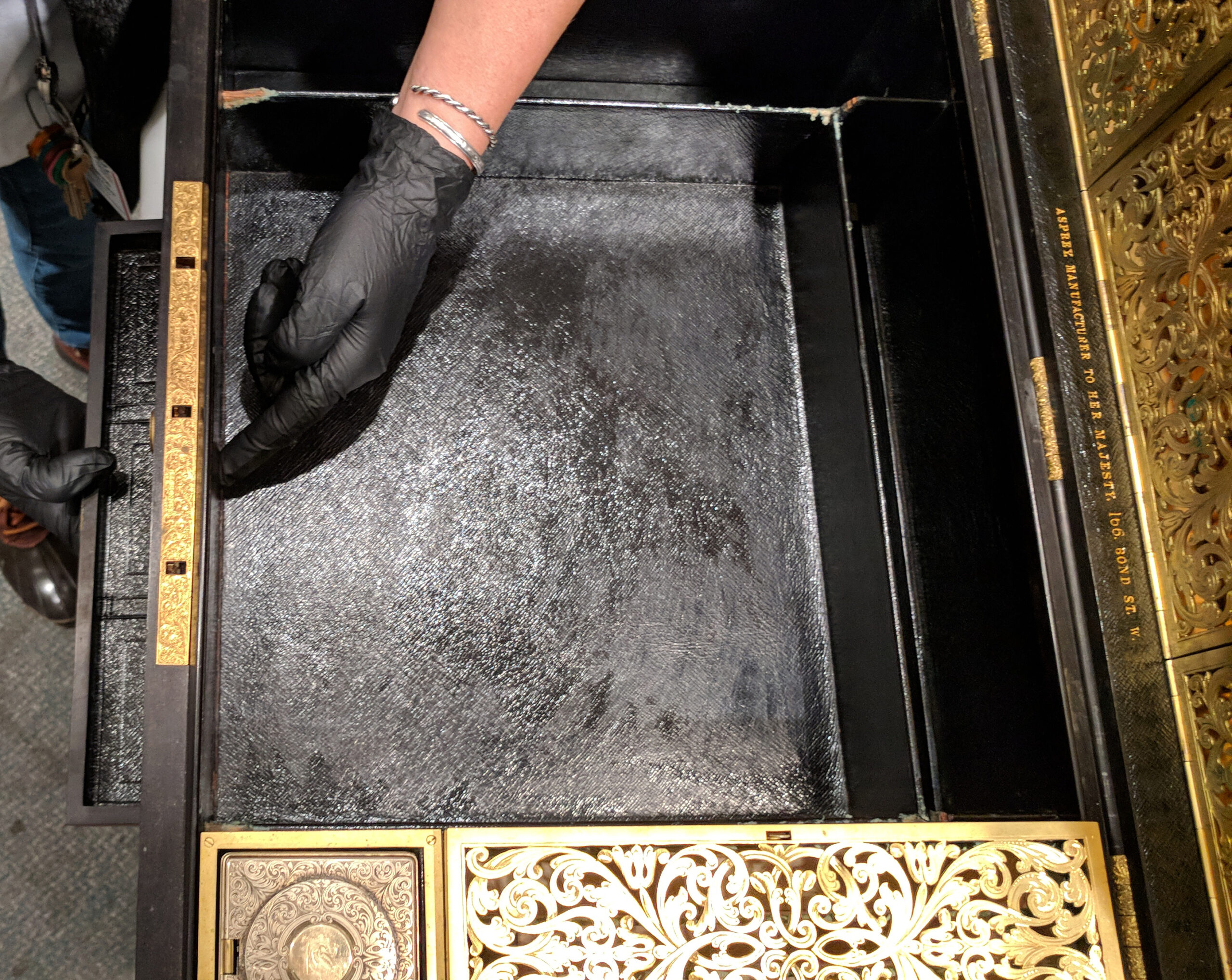
Another “dot” at the corner of the main compartment reveals the mechanism that releases a secret drawer under the compartment at the extreme right side of the box. Unfortunately, this mechanism seems to be broken as depressing it does not trigger the removal of the secret compartment like it should–thankfully its empty.
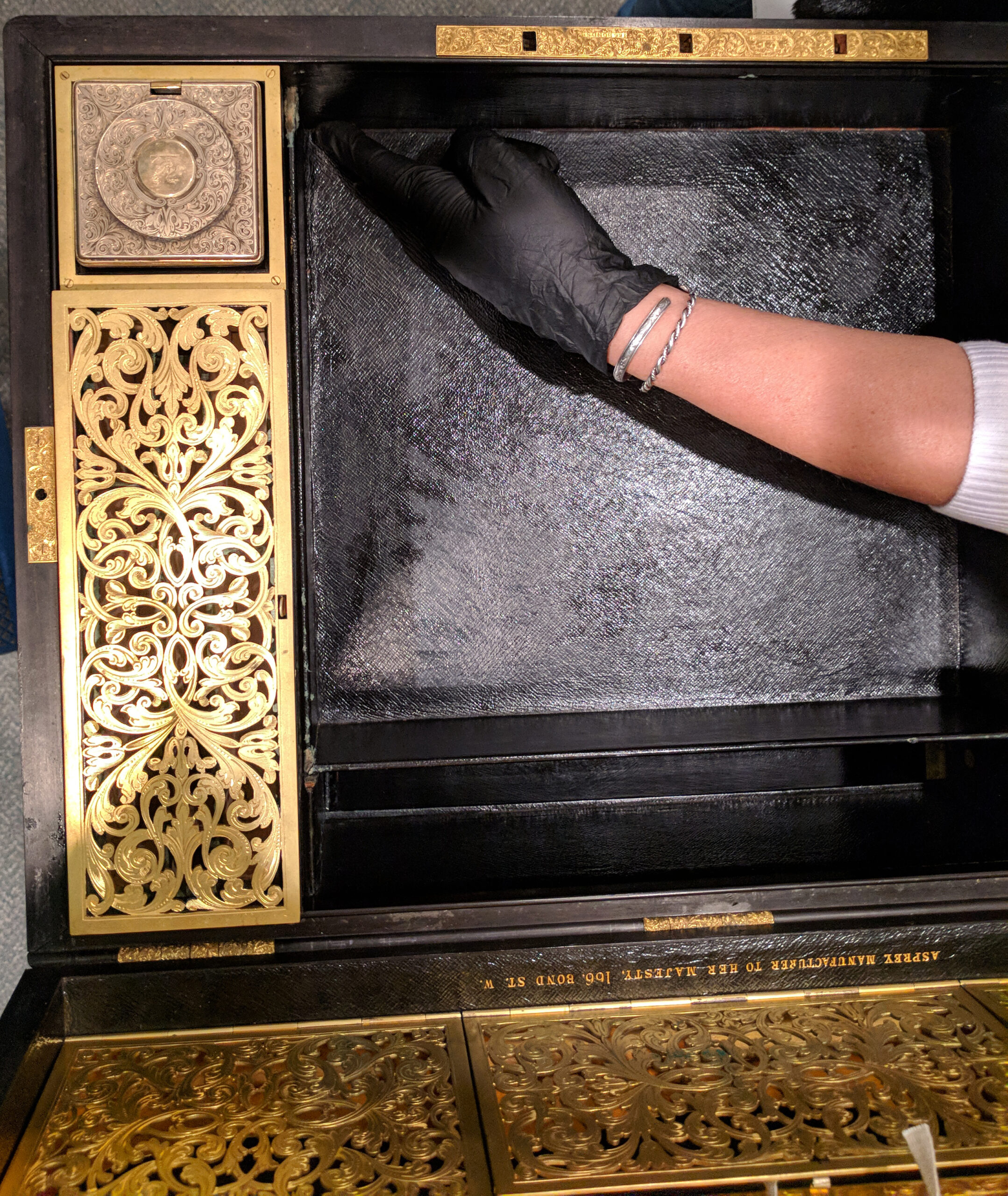

Pretty fantastic, huh? In a couple of weeks we are going to x-ray the piece to reveal all of the amazing hidden mechanisms contained within the structure box. Unfortunately that still won’t reveal all its secrets, we haven’t figured out who it was made for or if it was simply created for an international exhibition but we’ll keep digging! If anyone happens to be in London near New Bond Street run into Asprey’s and take a look at their exhibition space. Apparently they have a similar box on display and I would LOVE to see a picture of it! That should help us identify the contents of our missing trays and also let us know if the monograms and crests are similar to ours.